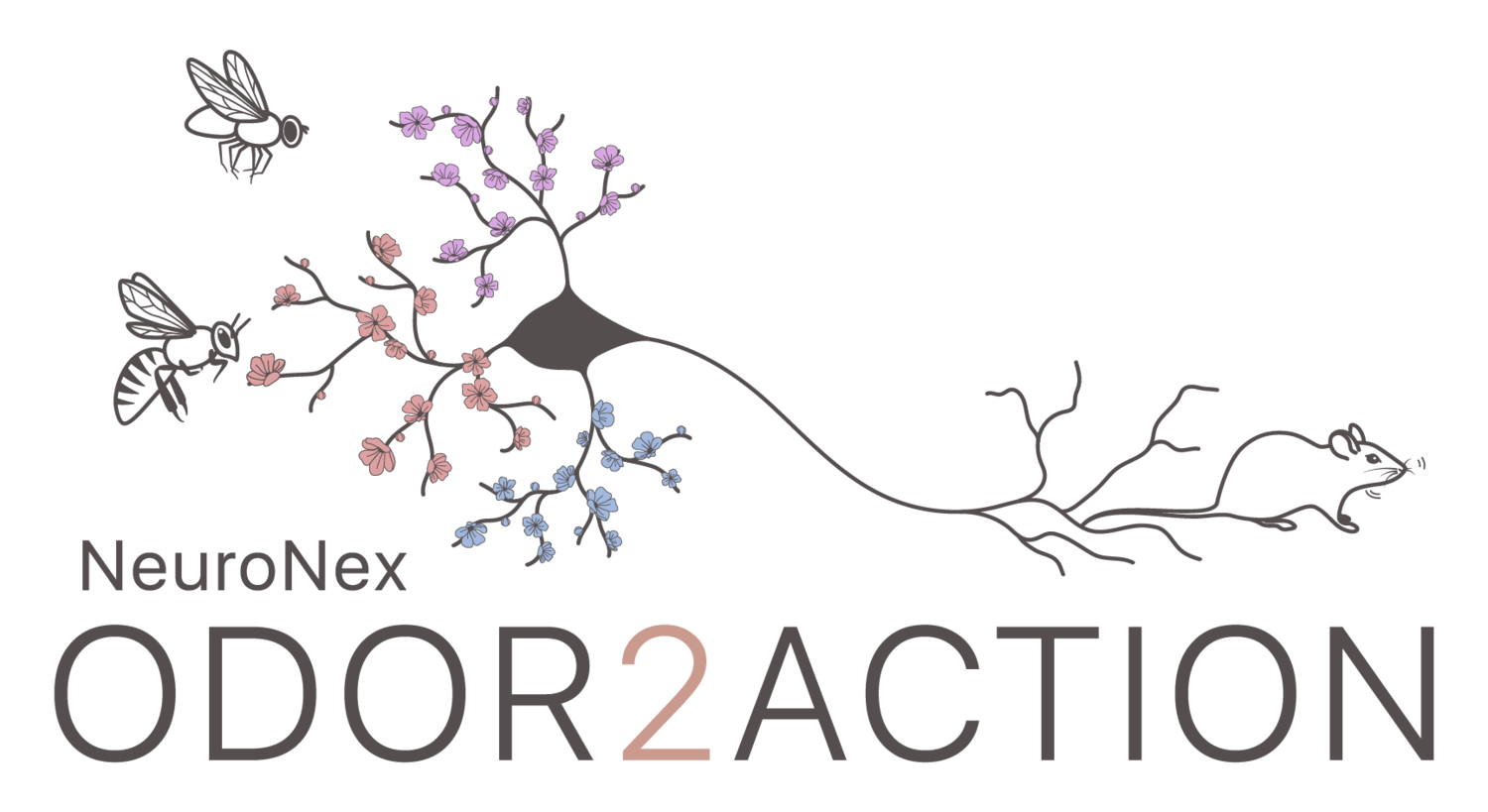The Odor2Action network brings together international scientists to understand a fundamental problem in neuroscience—how odors lead to behavioral actions. Using the olfactory circuit, we aim to achieve an end-to-end understanding of how brains organize and process information from odors in the environment to guide adaptive behaviors, and how these actions modify odor perception. Through highly synergistic and inclusive team science, Odor2Action strives to create a model of open data and technology sharing that accelerates discoveries across the scientific community.
THE PROBLEM
Animals use odor cues to navigate through their environments, helping them locate targets and assess danger. Much of how animal brains organize, read out, and respond to odor stimuli across spatial and temporal scales is not well understood. Odor2Action aims to transform current knowledge of how different animal brains create neural representations of odors, translate odor signals across neural circuits, and produce adaptive natural behaviors. This knowledge can lead to broad impacts across science, technology, health, and policy. Ultimately, our work will inform the development of algorithms, robots, and other engineered devices to detect, identify, and locate chemical sources, which can be applied to fields ranging from homeland security to food safety.
THE APPROACH
Odor2Action uses a team science approach to leverage the unique talents from leading neuroscientists, theorists, engineers, biologists, computer scientists, and physicists.
The network is organized into three synergistic interdisciplinary research groups (IRGs). Each IRG integrates theory and experimental approaches in ways that produce complementary interactions across levels of biological analysis. Our work uses fruit fly, honeybee, and mouse models to determine how neural representations of odor are generated, reformatted, and translated to generate useful behaviors that guide how animals interact with their environment.
INNOVATIONS
We will apply our findings to develop new technologies in measurement and control of stimuli, quantification of behavior, and recording of neural activity and circuit tracing. We envision the network as a mechanism for creating and disseminating expertise in these areas both within and outside of the network.
For the scientific community
We plan to develop a next-generation platform for sharing and analyzing data. We have designed a systematic, centralized, and expertly supported approach to meeting data management and cyberinfrastructure needs, including a PetaLibrary storage system, multiple hardware and cloud-based computing platforms, and a shared computing portal that utilizes the Jupyter web-based interactive development environment.For the public
Odor2Action is developing several technologies and educational resources—including hands-on activities, web-based programs, and educational games—to strengthen the public understanding of science and inspire people of all ages and backgrounds to get involved.For society
More than half of people over 65 are affected by olfactory defects, and many suffer from their inability to identify hazards and hygiene issues. Discoveries by our researchers will improve the biomedical understanding of the losses in quality of life that occur with declines in olfactory abilities due to neural injury, neurodegeneration, and mental health conditions. By uncovering mechanisms of odor coding, our work can inform novel, bio-inspired approaches to sensing and robotics that results in the development of assistive devices to help anosmic patients manage their everyday lives. Our work can also support the development of technological solutions to odor localization and identification that could be applied to human rescue in natural disasters or locating explosives and chemical weapons.
MISSION
The Odor2Action network will address a central question of neuroscience: How do animals use information from odors in their environment to guide natural behaviors? Our scientific findings hold important implications primarily for neuroscience, but also for engineering, healthcare, human safety, and quality of life.
VISION
The future of science will greatly benefit from large, inclusive, and collaborative research networks. We envision a scientific community that finds working on large-scale, team-science projects to be a natural and expected part of their careers. Through team science, we aim to do high-risk, high-reward research on olfaction that transforms scientific understanding of fundamental processes in the brain.
CORE VALUES
Collaboration
Accessibility
Diversity
Impact


